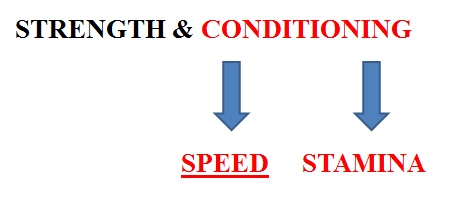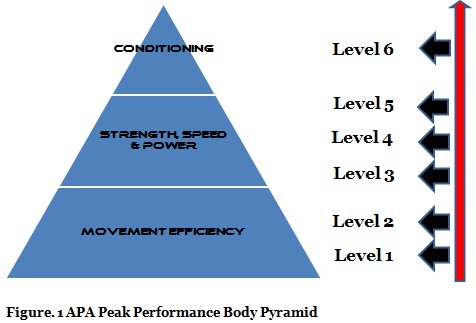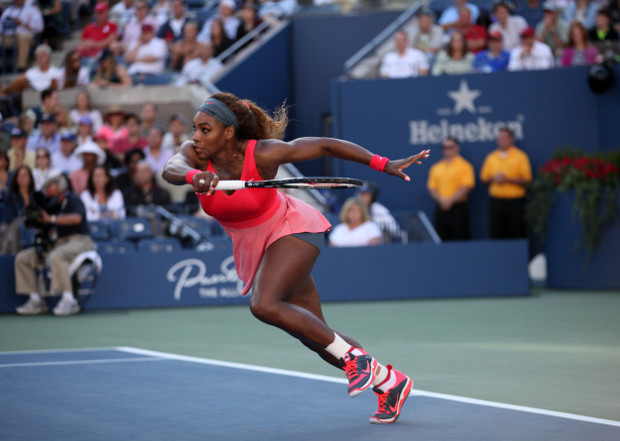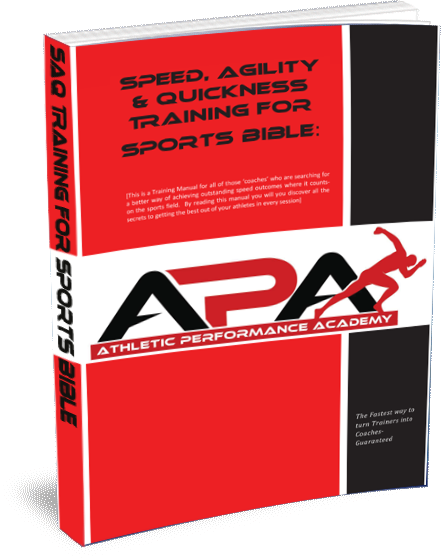Isn’t Getting Faster Simple?
It has often been said that the simplest approaches work the best, and on this basis the simplest way to get faster is to go out and practise moving at speed a few times a week. Right? Yes, providing the movements are efficient!!
I think we will all recognise when we see someone moving at speed (or at least have a pretty good idea) but we also need to explore some of the barriers to being able to get the maximum amount of speed out of all our athletes, and what to do in those situations.
Let us not forget that one of the key roles of an S&C coach is to develop a complete athlete capable of performing at the highest level they can free from any physical limitation. In my experience there are S&C coaches who are more big ‘S’ and little ‘c’ meaning they know their way around a weights room and how to get their athlete STRONG but don’t know as much about how to get them CONDITIONED.
S&C coaches need to understand that one of their key roles is to get their athletes FASTER and FITTER! The process of getting someone faster is no different to any other biomotor ability. It is a progressive journey and if you have already read the APA Philosophy page you will be familiar with the principle of Long-Term Athlete Development.
At APA we have created a 6 Stage Training System which is based on developing the athlete progressively. Please see the Figure below for an overview. This relates to not just speed but it underpins the principle of how to develop all biomotor abilities
The foundation level is all about developing the movement efficiency of the athlete so that they can move efficiently with the ability to move free from limitation or restriction. This level focuses on ‘Suppleness’ (mobility and stability). We also look at whether the athlete uses well-coordinated effort so that no movement is wasted-known as ‘skill’. I have already talked about the components of Skill in another page- so check it out here for an overview.
Table 1. APA 6 Stages of Development
|
Girls |
Boys |
||
|
Fundamentals |
Level 1 |
6-8 years old |
5-9 years old |
|
Learn to Train |
Level 2 |
8-10 years old |
9-12 years old |
|
Train to Train |
Level 3 |
10-12 years old |
12-14 years old |
|
Train to Train |
Level 4 |
12-14 years old |
14-16 years old |
|
Train to Compete |
Level 5 |
14-16 years old |
16-18 years old |
|
Train to Win |
Level 6 |
17 years old+ |
19 years old+ |
As you can see, an athlete will spend the majority of their formative years (pre-puberty) in Level 1 and Level 2 learning how to coordinate proper movements. As it relates to speed this means learning how to get the body into the proper positions to perform different types of Speed actions:
Straight ahead Speed:
This requires learning how to ‘Accelerate’ and also to understand how to get in the correct position for ‘Top Speed’ running.
First step speed:
This requires learning how to get in the position requires to get off the mark explosively. What makes this skill different to Straight ahead speed is that it can occur in any direction and often in response to a visual stimulus, rather than in straight ahead running where the athlete’s visual focus will be on the ground in front of them!
Multi-Directional Speed:
This is all about being able to minimise any loss of speed or balance during constant shifts in your body’s centre of gravity such as when occurs when you have to change direction. These direction changes will often be in response to the movements of their opponent or the ball so should be practised in both open and closed drill situations.
Sport specific speed (Footwork):
Often there is a misconception that all movements that occur in sport happen as fast as possible. In fact a lot of movements are about getting ready to react, in anticipation of the next opportunity to execute the skill. In many cases the types of movements that precede sport specific skill execution (such as the Tennis Forehand in the picture above) take place following some sort of ‘transitional’ footwork. This is often things like shuffle steps and cross-over type actions.
APA Speed development Pathway:
| Speed Focus | |
|
L1 |
Isolation: Marching (speed), turning and stopping (agility) and fast feet (quickness) |
|
L2 |
Isolation: Basic starts (speed), cutting (general agility), footwork (sport specific agility) and multi-directional sprints (quickness) |
|
L3 |
Combinations: focus on linking together various footwork patterns/directions. Can also include obstacle courses that weave together different challenges one after the other. |
| Randomisation: challenge the decision making skills of the athlete using tasks that focus on a specific aspect of speed. Can also include use of chaos games. | |
|
L4-5 |
Intensification: challenge the athlete to overcome external resistance |
|
L6 |
Accumulation: Train Anaerobic System using multi-directional running jumps |
The Table above highlights how the skill of speed development progresses as younger athletes move out of the ‘Foundation’ stage and start to train the skills. Level 3 to Level 5 is associated with performance enhancement. We test and train biomotor abilities associated with gross athleticism such as strength and speed. This tells us about how efficient an athlete is at generating power! It’s important to test the skills under conditions of more stress by combining the skills with other ones as well as randomising and intensifying the movements!!! Finally we look at an athlete’s level of conditioning at Level 6. We test and train the ability to reproduce explosive movements without a decline in quality.
We will assess the athlete in all areas of the Peak Performance Body Pyramid all of the time but the distribution of time spent training the different qualities will be based on what the assessment shows and the athlete’s stage of development.
For more information on how to develop these qualities why not check out our next Speed, Agility & Quickness Training for Sports Workshop
Also, if you would like more information on everything I’ve discussed above then check out my new Ebook with a 68-page colour Manual and access online to over 200 video clips of the very drills I use with my athletes every day. It will go over the entire APA Speed Development Pathway from Stage 1 to Stage 6. Click here for more details.










